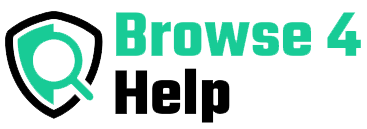You don’t have to be a hacker or secret agent to want a little privacy online. Maybe you want to keep work and personal life separate. Or perhaps you’re researching a sensitive topic and don’t want it tied to your main accounts. In situations like these, knowing how to create a secondary online identity — without breaking any rules — can be incredibly useful.
But here’s the important part: this isn’t about impersonation, fraud, or shady activities. It’s about creating a privacy buffer that lets you explore the internet freely while staying compliant with laws, platform guidelines, and ethical standards.
Why You Might Need a Secondary Online Identity
The idea of multiple online identities isn’t new. In fact, many professionals, students, and creators already use them every day — think of having a separate work email from your personal one. But in today’s hyper-connected world, the lines between these identities can blur quickly.
Here are some legitimate reasons you might want to create a secondary identity:
-
Separating work and personal accounts — Avoid mixing client projects with weekend plans.
-
Testing websites or tools — Check user experiences without affecting your real account history.
-
Researching sensitive topics — Journalists, educators, or healthcare workers often need to explore certain subjects discreetly.
-
Reducing data tracking — Keep marketing algorithms from tying every online move back to your main profile.
A secondary identity can give you breathing room without crossing into unethical or illegal territory.
The Problem With “Just Using Incognito Mode”
Some people think Incognito or Private Browsing is enough. While these modes do prevent your browser from saving history and cookies locally, they don’t hide your IP address, stop websites from recognizing you via browser fingerprints, or prevent account linking if you sign into your usual profiles.
In other words, if you log into your main Google account in Incognito mode, you’re still “you” as far as Google — and every connected site — is concerned. That’s why building a structured secondary online identity is more effective for real separation.
Create Secondary Online Identity: What It Means (and What It Doesn’t)
A secondary online identity in this context means:
-
Using different accounts, logins, and sometimes devices for certain types of browsing.
-
Keeping data streams separate so your personal life, work, and research don’t bleed into each other.
-
Following all laws and platform terms — no pretending to be someone else, stealing information, or falsifying official documents.
It does not mean creating fake IDs, forging credentials, or impersonating other people — all of which can land you in serious legal trouble.
Step-by-Step: How to Create a Secondary Online Identity Without Breaking Rules1. Start With a Unique Email Address
Your email is the backbone of any online identity. For a secondary identity, create a fresh email account that isn’t linked to your main one.
-
Use a provider like ProtonMail or Tutanota for privacy-focused options.
-
Keep the username generic but professional (e.g., “alex.research” instead of “coolguy123”).
-
Don’t use this email for personal banking, government services, or official business — keep it for browsing, research, or secondary projects.
2. Create Separate Browser Profiles
Most browsers (Chrome, Edge, Firefox, Brave) let you set up multiple profiles, each with its own bookmarks, cookies, and saved logins.
-
Label your profiles clearly: “Main” and “Research” or “Work” and “Personal.”
-
Sign into different accounts within each profile so there’s no crossover.
-
Use profile-specific themes or colors to avoid confusion.
Personal tip: I use a darker theme for my secondary identity so I instantly know which environment I’m in.
3. Use a Privacy-Friendly Search Engine
Your search history is one of the biggest giveaways of your online behavior. For your secondary identity:
-
Switch to DuckDuckGo, Startpage, or Brave Search.
-
Avoid logging into search engines that connect queries to your main account.
4. Keep Devices and Networks in Mind
If you want full separation, consider using a different device or at least a different user account on the same computer.
-
On shared networks (like work Wi-Fi), be aware that network administrators may still see activity.
-
For extra privacy, use a trusted VPN — but ensure it’s allowed under your workplace or school policies.
5. Store Passwords Separately
Don’t store passwords for your secondary identity in the same manager as your main identity unless the tool supports completely separate vaults.
-
Bitwarden, 1Password, and KeePass offer vault separation options.
-
Keep recovery information stored securely in case you forget.
Table: Primary vs. Secondary Online Identity
| Feature | Primary Identity | Secondary Identity |
|---|---|---|
| Personal or work-linked | New, dedicated email | |
| Browser Profile | Main default profile | Separate profile |
| Search Engine | Google/Bing | DuckDuckGo/Startpage |
| Account Use | Everyday life, finances | Research, testing, side projects |
| Password Storage | Main vault | Separate vault |
My Experience Balancing Two Identities
When I started freelancing, I used my personal accounts for client work. The result? My personal YouTube recommendations became full of marketing webinars, and my Google News feed was stuffed with SEO updates.
Once I set up a secondary online identity — complete with its own email, browser profile, and search engine — the difference was immediate. My personal feeds returned to my hobbies, while my work profile stayed laser-focused on industry updates.
It also made client testing cleaner. I could visit their sites without my personal browsing history influencing what I saw.
The Legal & Ethical Side
Creating a secondary identity is perfectly legal if you follow these guidelines:
-
Don’t impersonate another person or company.
-
Don’t use fake documents or credentials.
-
Don’t misrepresent yourself in a way that violates terms of service.
-
Always comply with local laws, especially for regulated industries.
Even if you’re not doing anything wrong, remember that some organizations have policies against using secondary accounts on their networks — check first to avoid issues.
Tips to Maintain the Separation Long-Term
-
Resist the urge to mix: Don’t log into your personal social media on your secondary profile.
-
Label accounts clearly: This avoids accidental posting from the wrong identity.
-
Periodically review accounts: Delete unused ones tied to your secondary profile to reduce your digital footprint.
-
Use consistent rules: Treat each identity as its own “persona” with specific boundaries.
FAQs About Creating a Secondary Online Identity
Q1: Can I use my secondary identity for social media?
Yes, as long as you follow the platform’s real-name and content policies. For example, you could run a professional page separate from your personal one.
Q2: Is this the same as using a pseudonym?
Not exactly. A pseudonym is a name you publish under, but it may still connect back to your primary accounts. A secondary identity includes separate logins, browsing, and email to avoid that link.
Q3: Do I need a VPN?
Not always, but a VPN adds an extra privacy layer if used legally and in compliance with rules.
Final Takeaway: Privacy With Integrity
Learning how to create a secondary online identity isn’t about hiding from the law — it’s about creating digital boundaries. By setting up separate accounts, browser profiles, and search habits, you can protect your privacy, focus better, and manage different aspects of your life without them spilling over into each other.
The trick is doing it with integrity: no deception, no fraud, no rule-breaking. Just smart, ethical privacy management in a connected world.



